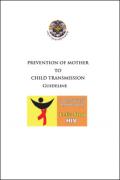Guidelines - Released in 2009
Considering the spread of HIV infection among women of the reproductive age, mother–to-child transmission has become a great concern in the area of HIV prevention and health services. The first mother-to-child transmission in Bhutan was reported in the year 2002. Seven cases have now been officially documented. This covers nearly 9% of the total HIV infection in Bhutan. It is inevitable that more pregnant women will be affected in the coming years.
Mother to-child transmission of HIV is the most significant source of HIV infection in children below age of 10 years. Transmission can occur during pregnancy, delivery and after delivery through breast milk. In the absence of appropriate interventions infected child are likely to survive infancy. The extent of HIV infection among pregnant women is often used as an indicator of HIV penetration into the population at large.
The Royal Government has responded by adopting the prevention of mother to child transmission (PMTCT) as an integral part of the nation's response to the HIV/AIDS catastrophe. PMTCT will be a part of a wider response to HIV/AIDS, which includes expanding access to care and support for HIV infected mothers and their families, including treatment of opportunistic infections and accelerating access to treatment. PMTCT prevention should not stand in isolation, but it should be integrated to existing Health care infrastructures and Reproductive Health Services.
Downloads
Organizations
- Ministry of Health - Bhutan






